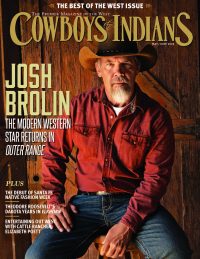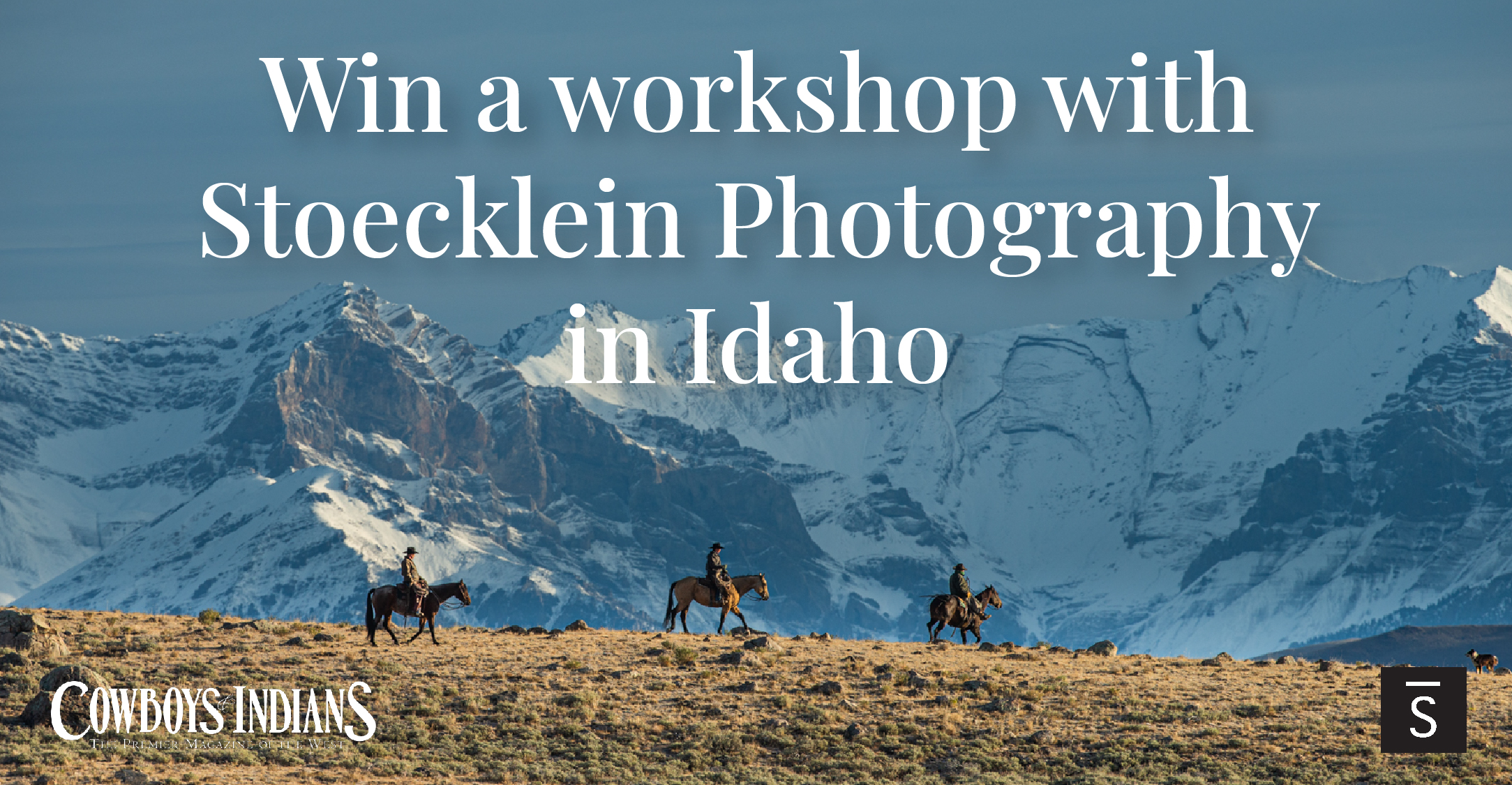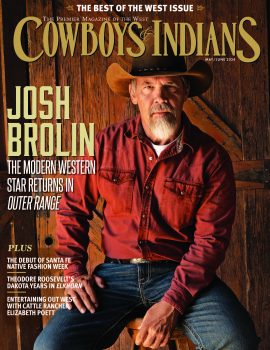Native American designers are fashioning age-old traditions into modern haute couture.
Native American-made fashions are in the spotlight — and on the runway — as more and more indigenous designers are making their mark. Over the last five years, there has been an explosion of couture creativity, from Olympic outerwear to network TV shows to Paris catwalks.
What do these designers have in common? “If anything is similar, it’s that they are reaching for the stars,” says Jessica Metcalfe, who started the popular Beyond Buckskin blog and boutique to spotlight Native American designers and their work, focusing on authentic, contemporary Native fashion. “I think a lot of designers started thinking bigger and that they can accomplish big things.”
Cowboys & Indians talked with five Native American designers who don’t necessarily eschew buckskin but definitely do go beyond it. From different tribes and regions, they are transforming their experiences and heritages into fashion-forward haute couture.
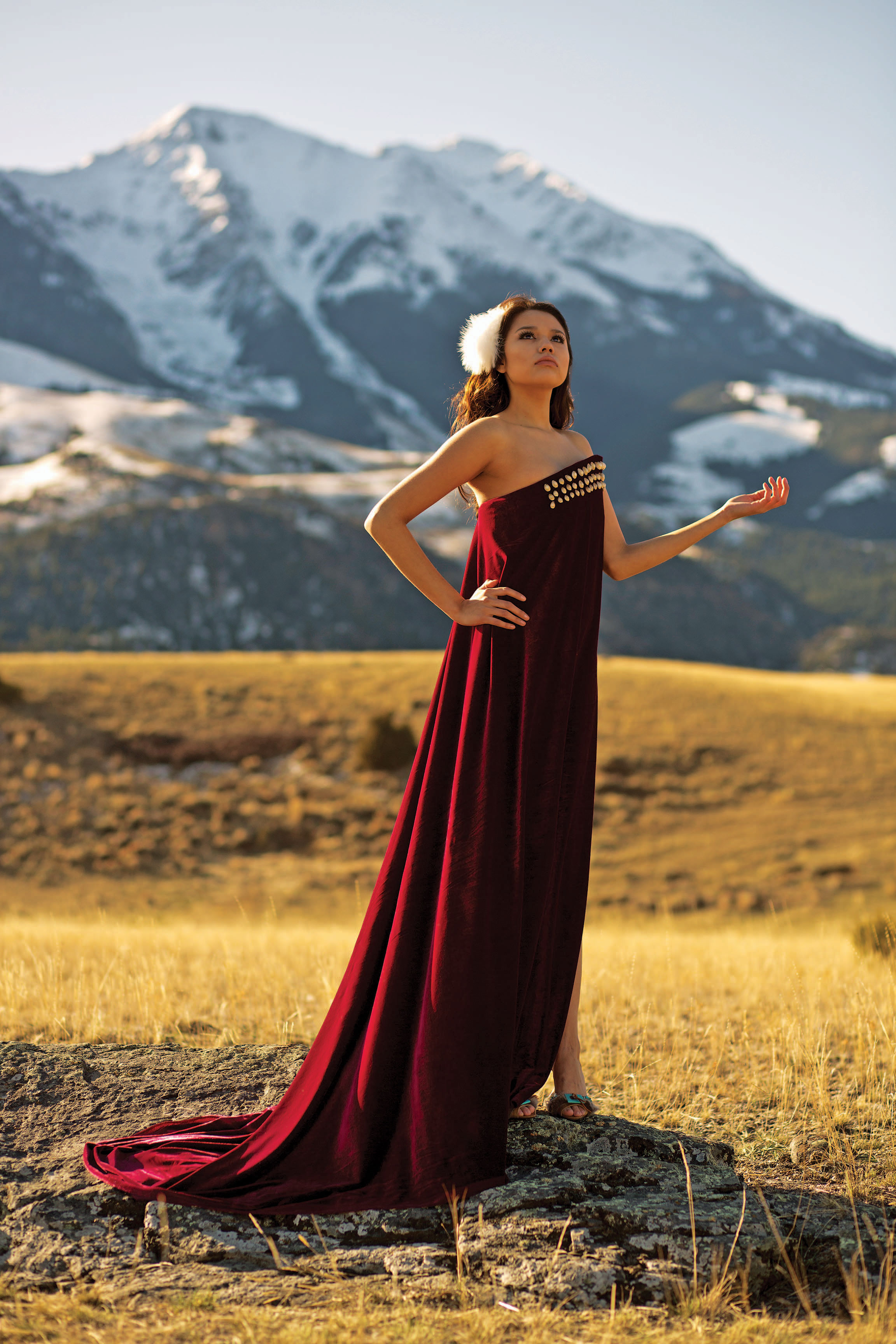
Jolonzo Goldtooth
Navajo
Age: 29
Location: Farmington, New Mexico
Line: JG Indie
He grew up on the family cattle ranch on the Navajo Nation, but Jolonzo Goldtooth ranged far from home — to college, to Manhattan, to Los Angeles — before ending up back in New Mexico after graduation to live with his grandmothers. It was his grandmothers, after all, who had taught him to sew. And it was back on the family ranch with them that he would launch a fashion career with his own Scarlett O’Hara moment.
He had a degree in psychology from the University of New Mexico, a minor in Native American studies, and a post-grad background in office work, bank telling, and waiting tables. What he didn’t have were money and a career path.
“My sister was moving and there was this curtain — a red, kind of ruby-maroon color silk curtain. It was a pretty big piece of fabric that she was just throwing away, and she asked me if I wanted it.” Inspired by Japanese culture, and with the addition of a snow leopard-print scarf and a jacket from Goodwill, he transformed his find into a youthful obi-wrapped kimono dress, and a career was born.
That was early in the summer of 2012. By August, Goldtooth’s amateur status was setting him apart during his first show, for the Navajo Arts and Crafts Enterprise Fashion Show at the Navajo Nation Fair in Window Rock, Arizona. “There were other Navajo designers, and they had very contemporary traditional design aspects as far as Navajo goes — using velveteen, a lot of silver, conchos,” he recalls. Goldtooth’s looks, though sewn using Native techniques (he had learned beading on the powwow circuit), were inspired by something altogether different: his fascination with Japan and the Japanese punk fashion trend harajuku. “I was definitely the black sheep of that group. And I only had eight looks.”
Black sheep or not, after the show, his career began to snowball. Goldtooth’s now creating one-of-a-kind pieces, showing in New York City, and expanding to include a men’s collection — all as hands-on as that first curtain obi.
“The way I design, everything is handcrafted,” he says. “I make the patterns myself; I do the draping. Nothing is pre-produced. I produce everything, right down to every little stitch, and I take strong pride in that.”
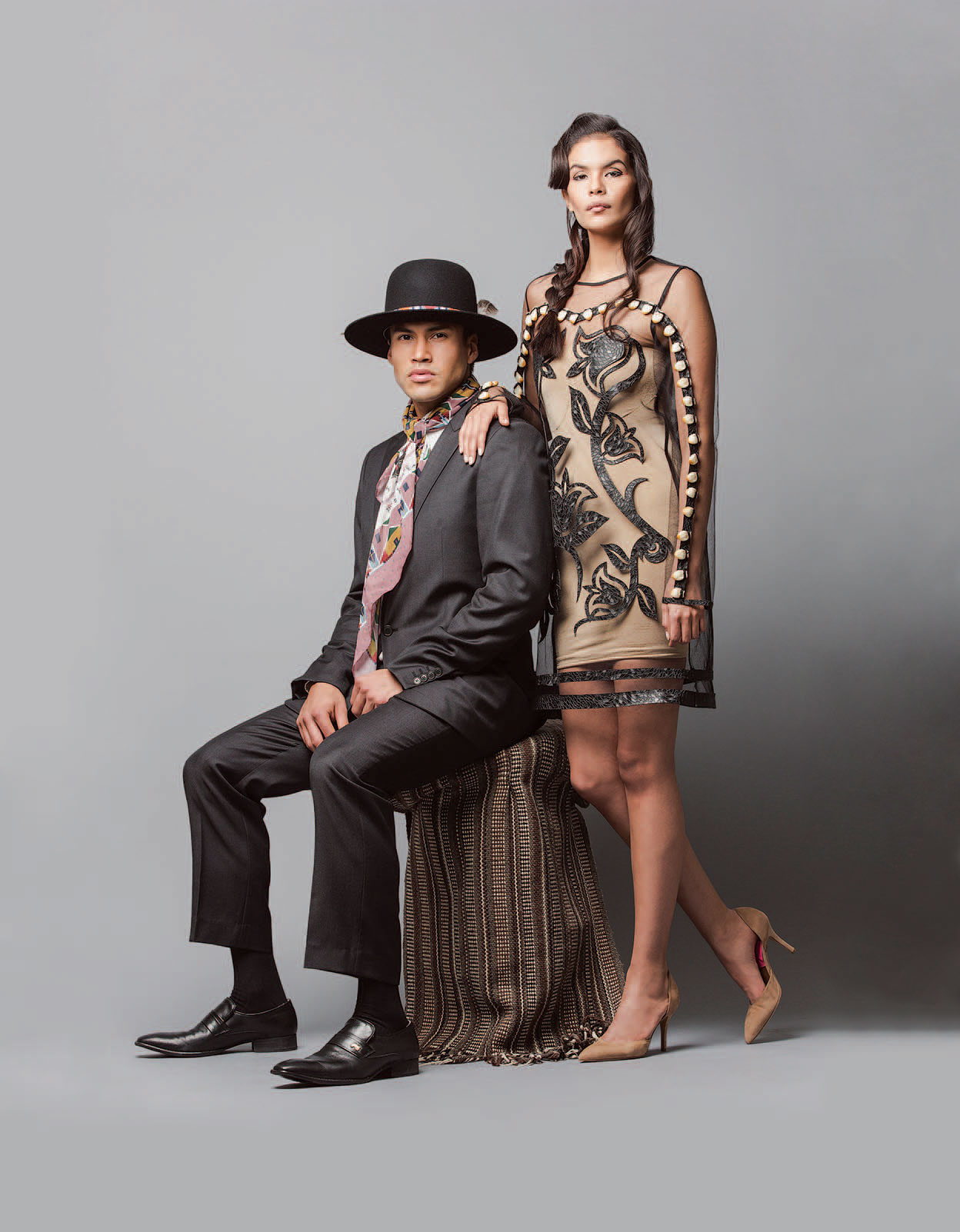
Bethany Yellowtail
Crow, Northern Cheyenne
Age: 26
Location: Los Angeles
Line: b.YELLOWTAIL
As a child in southeast Montana, where her father is a cattle rancher, Bethany Yellowtail began picking up her skills from relatives and schoolteachers. After seeing the 2006 remake of The Pink Panther, Yellowtail made her first ensemble: a pink suit similar to the one Beyoncé donned on-screen. When her best friend couldn’t find something flattering to wear for prom, Yellowtail made her dress. The next big step was moving to Los Angeles to attend the Fashion Institute of Design & Merchandising.
After graduating in 2009, Yellowtail worked in corporate fashion for lines such as BCBGMAXAZRIA. But she felt something was missing. “As an indigenous designer, it’s a lot more thought-out; it’s a lot more cared-for in the sense that it’s carrying out culture,” Yellowtail says. “Fortunately and unfortunately, I’ve worked for fashion brands that put out Native-inspired collections. And I wasn’t in the place to say, ‘No, that’s not how you do it.’ I saw that and thought, That’s not the way I was taught.”
Her desire to represent herself and her culture appropriately led her to start her own line. Launched in January, b.YELLOWTAIL targets a bold, modern woman and incorporates the designer’s Native heritage and home. “I love my community; I love where I come from,” Yellowtail says. “I feel like when I design that I’m designing with a much bigger purpose, and I’m representing not only my nation but other nations as well — Native people.”
Yellowtail knows her audience is limited to people who are seeking quality clothes and who want to support a Native artist. “The customers who I’m trying to reach will come, and they are going to come because they are looking for a brand that is deeper and bigger than just great clothes,” she says. “People are going to keep coming back because they understand the history and the cultural value of what I’m doing. And those are the people I want. I’m doing it out of a good place and out of love.”
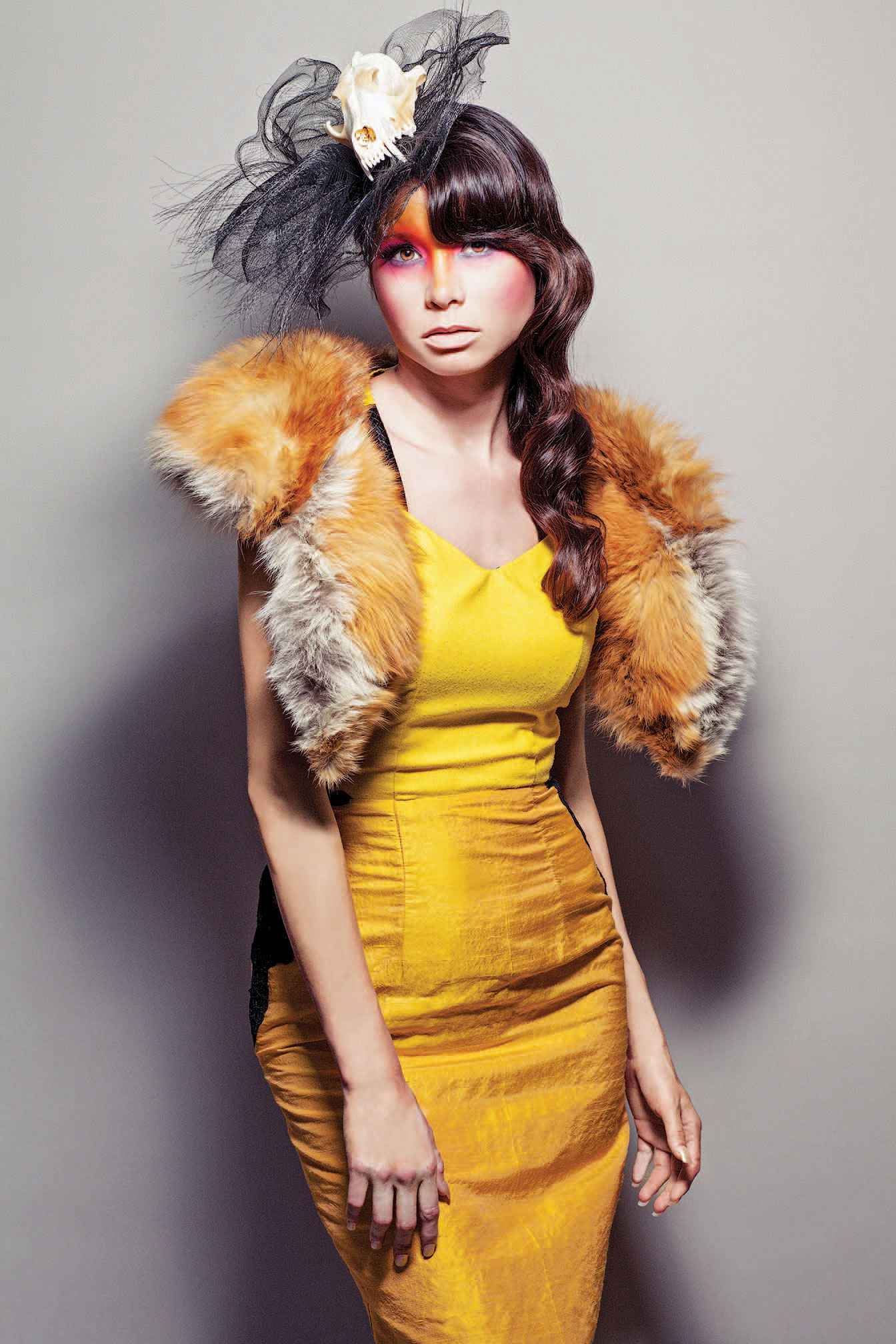
Sho Sho Esquiro
Kaska Dene, Cree
Age: 34
Location: Vancouver, British Columbia
Line: Sho Sho Esquiro
For three months leading up to the J Autumn Fashion Show, Sho Sho Esquiro worked 18 hours a day designing, sewing, and editing her “Worth Our Wait in Gold” collection for the big Paris show that would transform the Eiffel Tower into a catwalk. For Esquiro, who was representing her native Canada, the show was more than an opportunity for her clothes to be seen: It was a platform for raising awareness.
Inspired by the more than 1,200 unsolved cases of indigenous women in Canada who have been murdered or gone missing since 1980, the collection signifies Native women waiting for justice. “It’s important for me to bring awareness to important subjects like that,” Esquiro says. “I was very honored to have that opportunity and that platform, so I thought it was important to bring a purpose to that whole show.”
Since the epic show, the self-described “self-learning” designer has been pushing herself even harder. No stranger to tough stuff, she grew up in the Yukon sewing clothes for herself and her three siblings, using the Sears catalog as inspiration. Now her ideas and materials might spring from politics, elders, music — even a sweater from a thrift store.
“It kind of just comes organically,” Esquiro says. “I don’t force anything. People will give me things, like donate an old fur coat, and that will inspire me. And it will kind of just grow from there. I just kind of let it happen.”
Although people frequently ask when her clothes will be made commercially available, many of Esquiro’s pieces are strictly couture and head straight from catwalk to museum rather than from runway to rack.
Mass-produced in the mall is not where Esquiro’s headed. “I’m not interested in that whole fashion world — that’s not who I am,” she says. “When I’m like 60, I want to be making maybe four pieces a year and each piece sells for like $60-, $80-, $100 grand. I really just want to be able to do my art and live comfortably and inspire people and not leave a big carbon imprint just for the sake of money.”
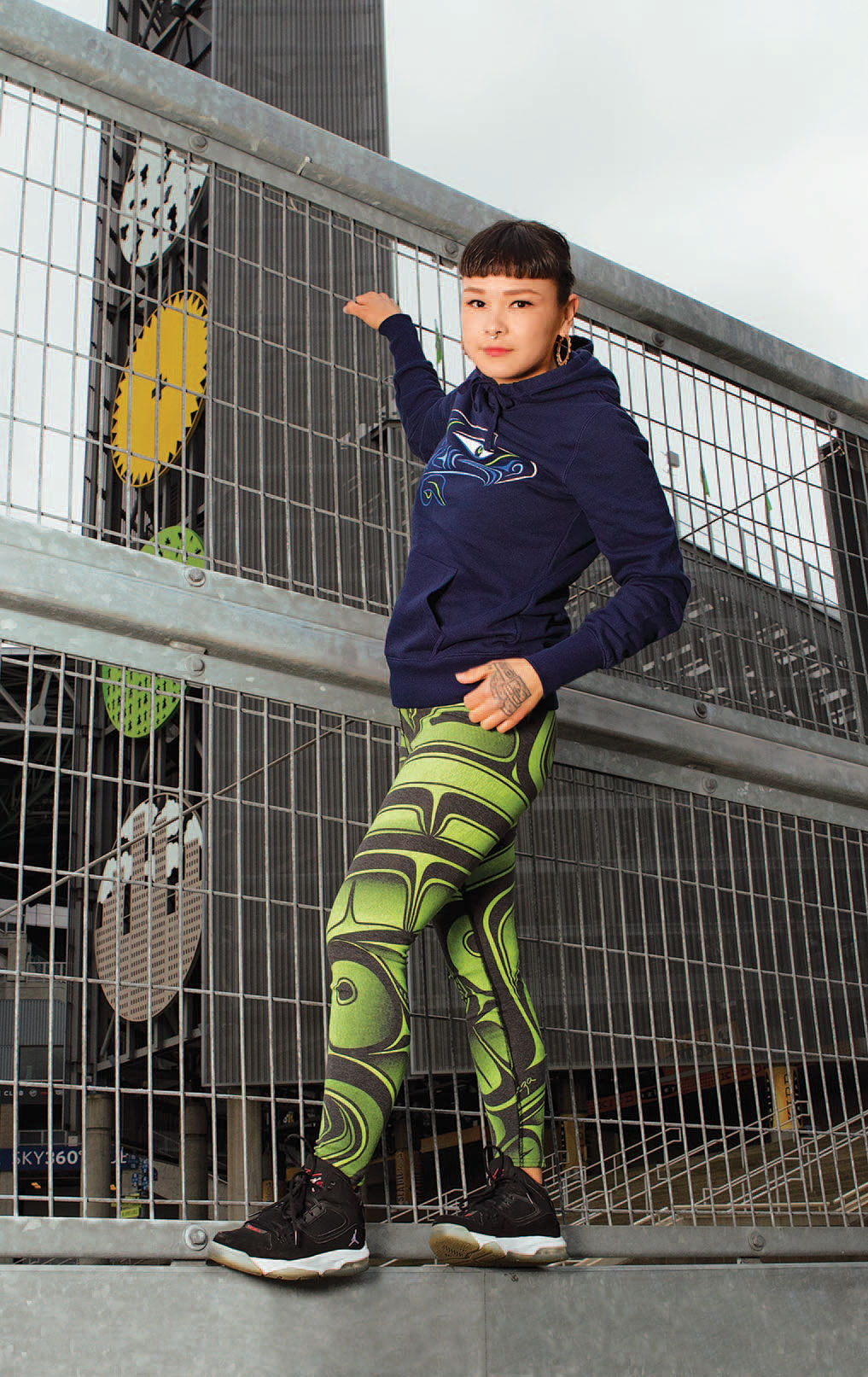
Alano Edzerza
Tahltan
Age: 34
Location: Vancouver, British Columbia
Line: Native American Apparel
Alano Edzerza has been an artist all of his life. After apprenticeships with artists and jewelry makers, he found his own direction in 2003 when he began experimenting with printing oversize graphics on used clothing.
“I went and bought a whole bunch of clothes at secondhand stores,” he says. “I hired a print shop for a day rate to do a whole bunch of wild, oversize prints, over seams, over whatever I could do to get the biggest shocking-looking item, the most graphically charged clothes for the photography.” He printed everything from men’s blazers to women’s dresses. “It was visually really successful, and ever since then I’ve been basically trying to put that wild experiment into production.”
He began selling his clothes in his downtown Vancouver gallery, where he also sold his paintings, carvings, and sketches. It was in his gallery that he would land the gig of a lifetime.
“It was a total fluke,” Edzerza recalls. “I asked some visitors what they did for a living, and they said they were from the Dutch Olympic Committee. So I said they should hire me to do their jerseys.” He showed them one of his T-shirts with a wing decal adorning the sleeve.
Two weeks later, when the committee landed back in the Netherlands, Edzerza received a contract and was soon at work on uniforms for the 2010 Vancouver Winter Games.
Soon after the Olympics, he left behind the idea of a brick-and-mortar store and began focusing on his presence online, where customers from around the world were showing interest in his work. In 2011 Edzerza bought his own silk-screen machine, learned the process, and began printing his designs even larger. Now partnering with a local clothing factory to manufacture the garments, he can concentrate on maximum graphic impact.
Designing for and targeting a broad audience is entertaining and challenging, he says, but that’s how he likes it. “It seems like it would limit your creativity, designing for just one demographic.”
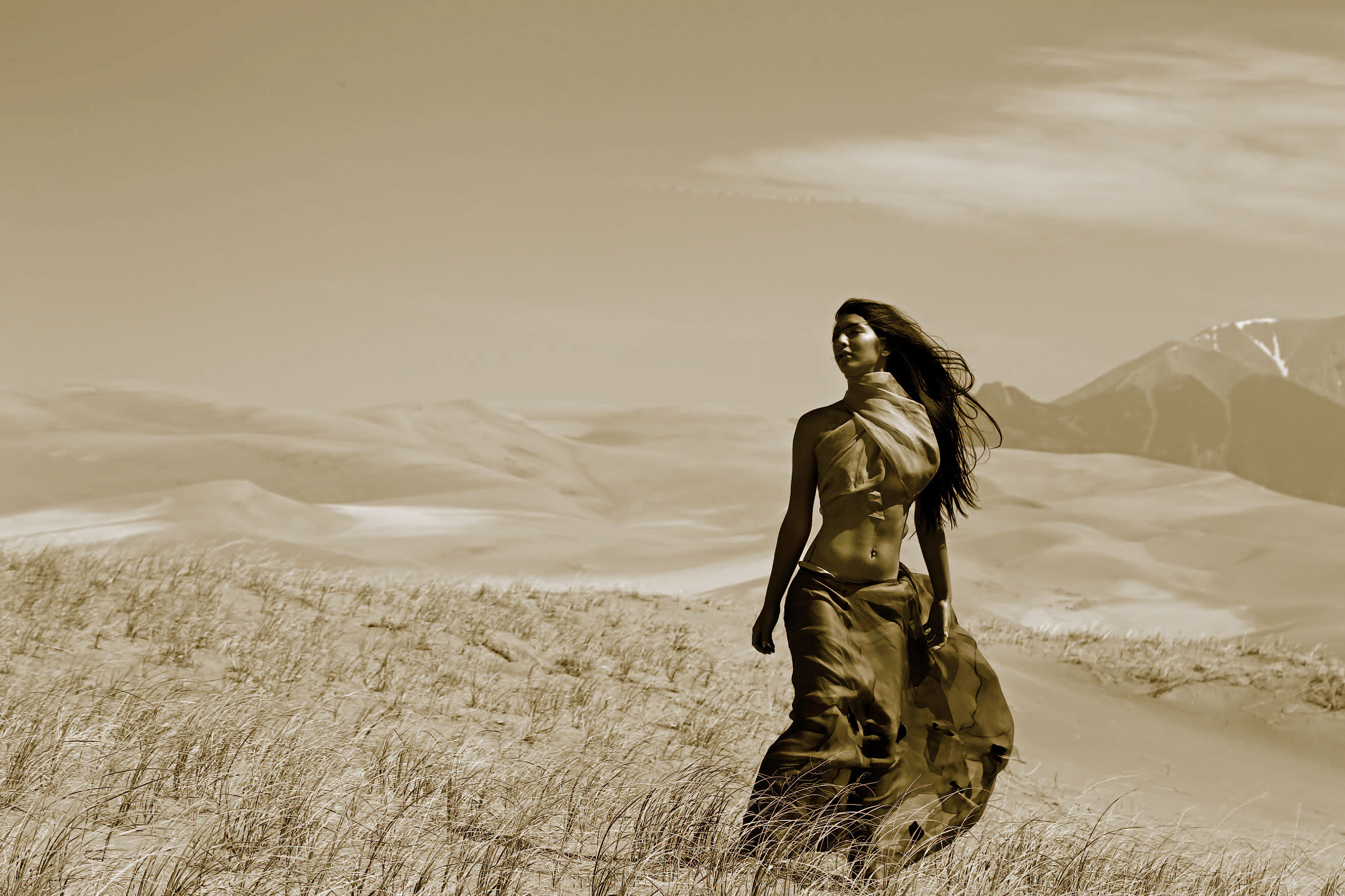
Patricia Michaels
Taos Pueblo
Age: 48
Location: Taos, New Mexico
Line: PM Waterlily
Although her early designs were deemed too contemporary and not reflective of traditional Native American style, Patricia Michaels found success as a finalist on Season 11 of Project Runway. And though her couture looks were sometimes mocked by other contestants, mentor Tim Gunn and the judges encouraged her all the way to the Mercedes-Benz Fashion Week finale at the Lincoln Center for the Performing Arts in New York, where her second-place finish landed her an invite back for Season 4 of Project Runway All Stars.
Since her national success as the first Native American designer to compete on the show, things have changed: People now understand her work. “Before I did Project Runway, places like [the Santa Fe] Indian Market or other art shows, Native art shows, wouldn’t think that my stuff was Native. But now people understand and they get my voice — that I’m Native — and that my approach uses inspiration from my culture, which is very nature-oriented. [Now] it makes sense [to them] why I create the way I do.”
Michaels credits the Project Runway judges with challenging her to make off-the-rack garments. “I’ve actually done some ready-to-wear garments, so not everything has to be tailored or exclusive for couture,” she says. “And I’ve also opened my mind to using new materials. Now I actually enjoy working with jersey fabric.”
Michaels sees the evolution of her craft as an outgrowth of her Native roots. “It’s supposed to change,” she says. “And that’s how I see Native Americans traditionally with their garment making. They were always changing: Ribbon came in as part of the trade, and they started to do fabulous work with ribbon. Beads came in; they started to do fabulous work with beads. Different feathers, different dyes, different materials — it’s just a continuum of creative Native aesthetics.”
At this point in her career, Michaels says, it’s gratifying to see current designers evolving, going with a contemporary flow and getting credit — not criticism — for making it work.
From the August/September 2015 issue.



